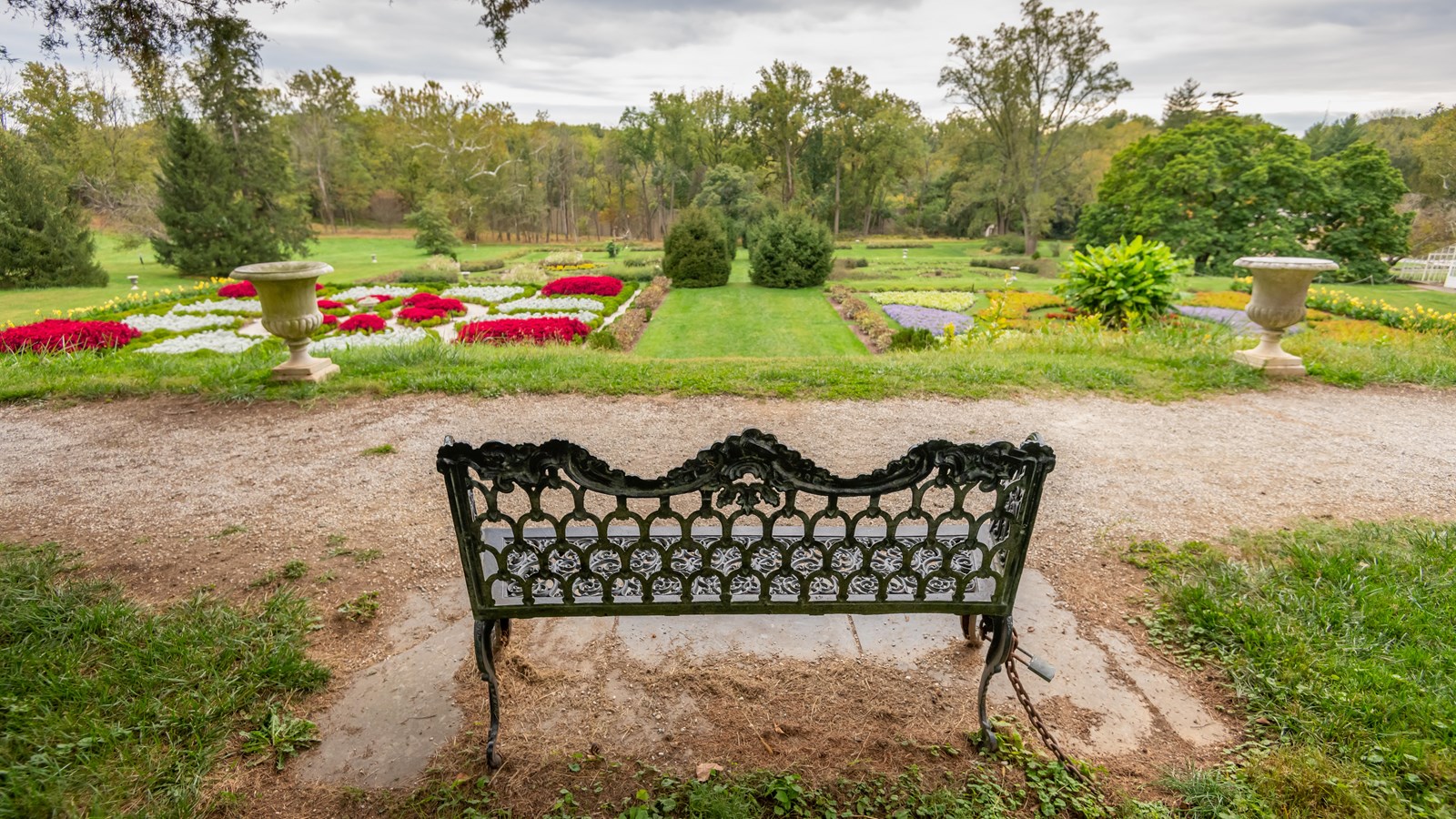Last updated: January 25, 2022
Place
Formal Gardens

NPS/Franz
Benches/Seating, Cellular Signal, Historical/Interpretive Information/Exhibits, Scenic View/Photo Spot
In 1859, noted horticulturist Henry Winthrop Sargent wrote that “it has been truly said of Hampton that it expresses more grandeur than any other place in America.” Having visited Hampton gardens at their most extensive and with their greatest variety, Sargent expressed a truly unique landscape in its day. Hampton’s gardens today are a living collection that tells several stories. Though intended for the enjoyment of the Ridgely family, Hampton’s garden landscape was originally designed by Daniel Healy, an Irish-born gardener and indentured servant whose indenture was transferred to Captain Charles Ridgely in November 1784. Familiar with European landscape practices of the period such as those outlined in John James’s The Theory and Practice of Gardening (1712), Healy supervised the creation of the 240-foot by 480-foot Great Terrace and the 80- by 50-foot rectangular parterres of the Falling Gardens of Hampton. The dimensions of Healy’s gardens echo the dimensions of the main block of Hampton Hall, and with its clean lines and balanced use of space, the gardens reflect the same aesthetic qualities of the mansion architecture. Creating the dramatic overlook from the terrace required laborers to carve out of the hillside an 18-foot drop off with turf ramps connecting the six parterres with the terrace. The backbreaking work of crafting the landscape fell to enslaved African Americans and indentured servants.
Over time and generations, Hampton’s landscape evolved from a traditional English garden to a new American landscape featuring a variety of specimen trees and a combination of exotic and native species. In 1810, designer William Booth laid out an early version of the geometric gardens called parterres. By the mid-nineteenth century Eliza Ridgely—an avid horticulturist—introduced the Victorian “carpet bedding” including exotic varieties and fashionable marble urns. Each generation left its imprint on the landscape and the changing nature of the gardens reflected changes in landscape management styles and the resources available to the Ridgely family to maintain such lavish gardens.
